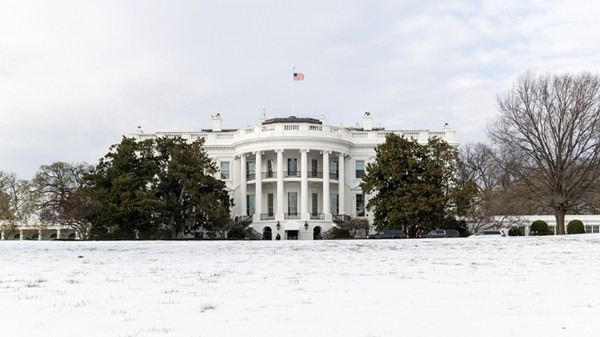Uranium producers await US presidential decision
The US Department of Commerce (DOC) on 15 April submitted to the White House the results of an investigation into the effects of uranium imports on US national security. US President Donald Trump now has up to 90 days to decide whether to act on the DOC's findings and recommendations, which have not been made public.

The DOC report is now at the White House (Image: The White House/Shealah Craighead)
The investigation, under Section 232 of the Trade Expansion Act of 1962, was triggered by the filing in January 2018 of a petition by uranium mining companies Energy Fuels Inc and Ur-Energy. In it, the companies said the loss of a viable US uranium mining industry would have a significant detrimental impact on the country's national, energy and economic security and its ability to sustain an independent nuclear fuel cycle. They sought a quota to limit imports of uranium into the USA, effectively reserving 25% of the market for domestic production, and a "buy American" policy for federal entities needing to purchase the material.
EnergyFuels and Ur Energy yesterday said: "We have not seen the DOC report, which is expected to remain confidential, but we believe the facts are clear ... The once robust American uranium mining industry is disappearing because a flood of state-subsidised imports has made fair competition impossible."
The presidential decision must be made by 15 July, at the latest.
Wayne Heili, managing director and CEO of Peninsula Energy, said the company would in the meantime continue to focus on enhancing the production capacity and the cost effectiveness of its Lance project in Wyoming.
"With the outcomes of the Section 232 investigation sitting outside of its control, we await the presidential review process and will provide further updates to the market when the outcomes of that process are known," he said.
Blake Steele, president and CEO of Azarga Uranium, also said the company would continue to focus on executing its corporate strategy pending any decision.
"Our focus remains on advancing our initial development priority, the Dewey Burdock in-situ recovery uranium project in South Dakota," he said.
Australian company Bannerman Resources Limited, which is developing the Etango uranium project in Namibia, said: "After effective lobbying by the Ad Hoc Utilities Group … a broad range of potential outcomes are seen as possible, including a decision to take no action.
"The variation in scope and effect of these potential outcomes, coupled with the breadth of the discretion afforded to the White House, has created uncertainty that has resulted in most utility procurement programmes being suspended or sharply curtailed."
The Ad Hoc Utilities Group (AHUG), which represents US nuclear power generators, has urged the DOC to avoid placing tariffs or quotas on uranium imports.
"A 25% domestic uranium quota would add USD500-800 million in annual costs to already economically challenged [nuclear power] plants in an industry that provides 100,000 direct jobs and 475,000 indirect jobs, whereas the entire mining industry employs about 400 workers," it said on 8 April. A quota would also "deplete and ultimately exhaust" US uranium resources, creating national security concerns, it said.
According to Bloomberg, former US Energy Secretary Ernest Moniz reacted to the filing by saying a commodity such as uranium, which can be easily stored in large amounts, was not a "driving" concern for national security. "I have never considered uranium to be a major security issue," he said.
According to the US Energy Information Administration, 7% of the 43 million pounds U3O8 (16,540 tU) purchased for use in US nuclear power plants in 2017 - the most recent year for which data is currently available - was of US origin. US uranium production in 2018 was 564 tU according to World Nuclear Association, and is currently at its lowest since 2004. A 25% domestic uranium quota would therefore necessitate a major increase in production.
- China Institute of Atomic Energy
- Nuclear Power Institute of China
- Southwestern Institute of Physics
- China Nuclear Power Operation Technology Corporation, Ltd.
- China Nuclear Power Engineering Co., Ltd.
- China Institute for Radiation Protection
- Beijing Research Institute of Uranium Geology (BRIUG)
- China Institute of Nuclear Industry Strategy (CINIS)
- China Nuclear Mining Science and Technology Corporation


